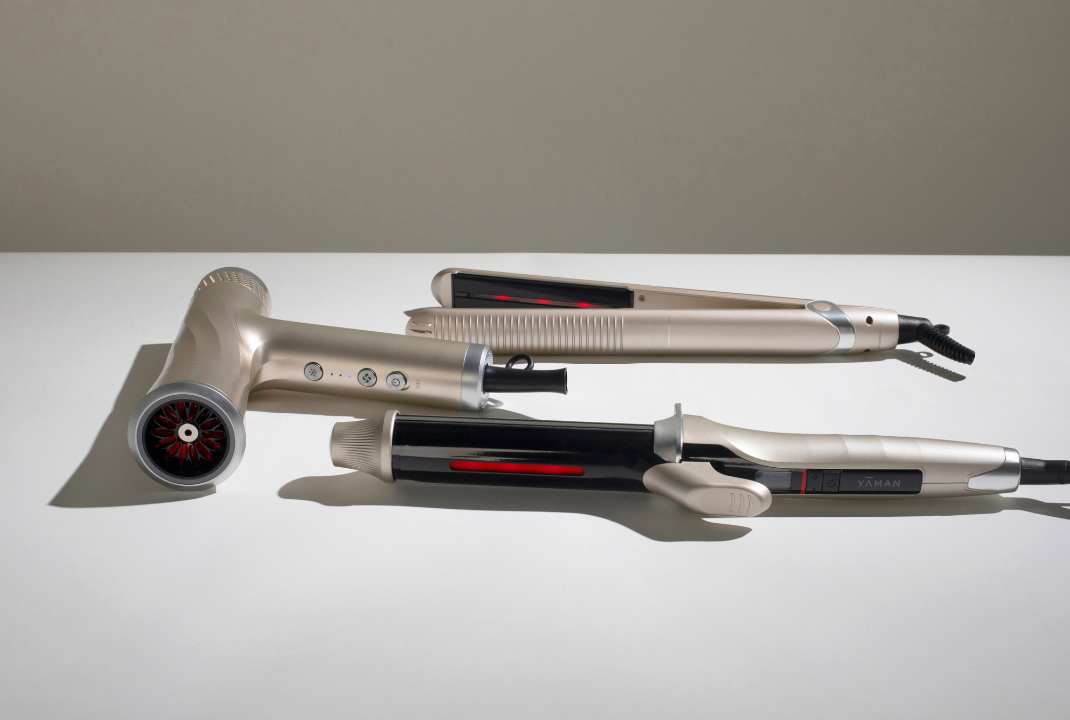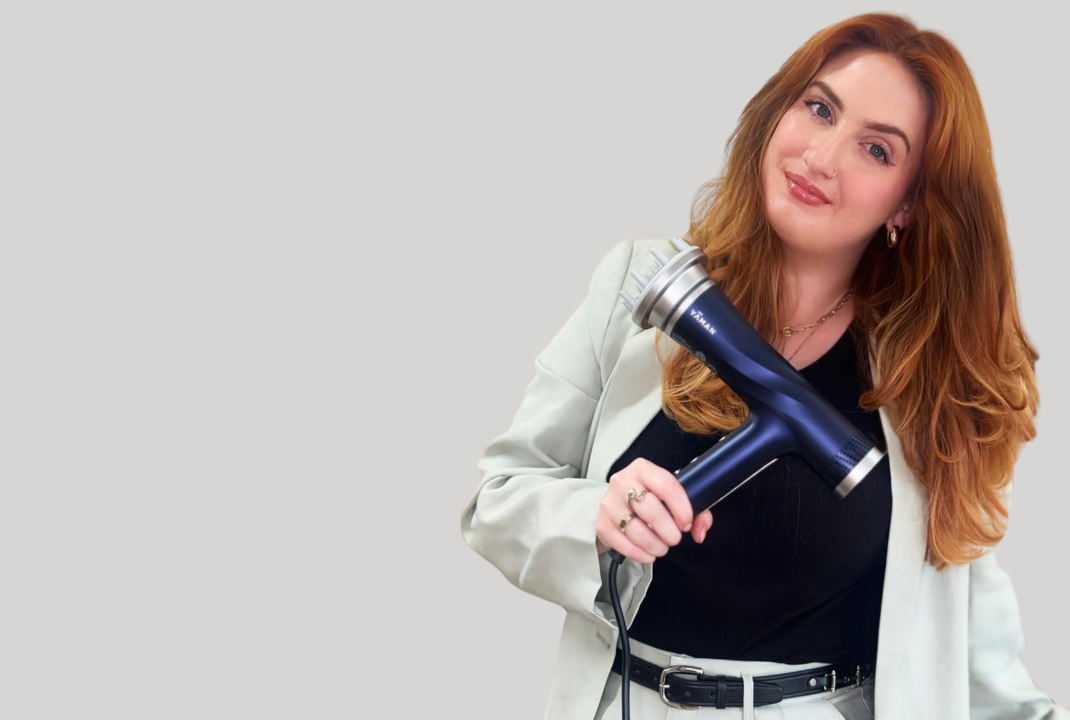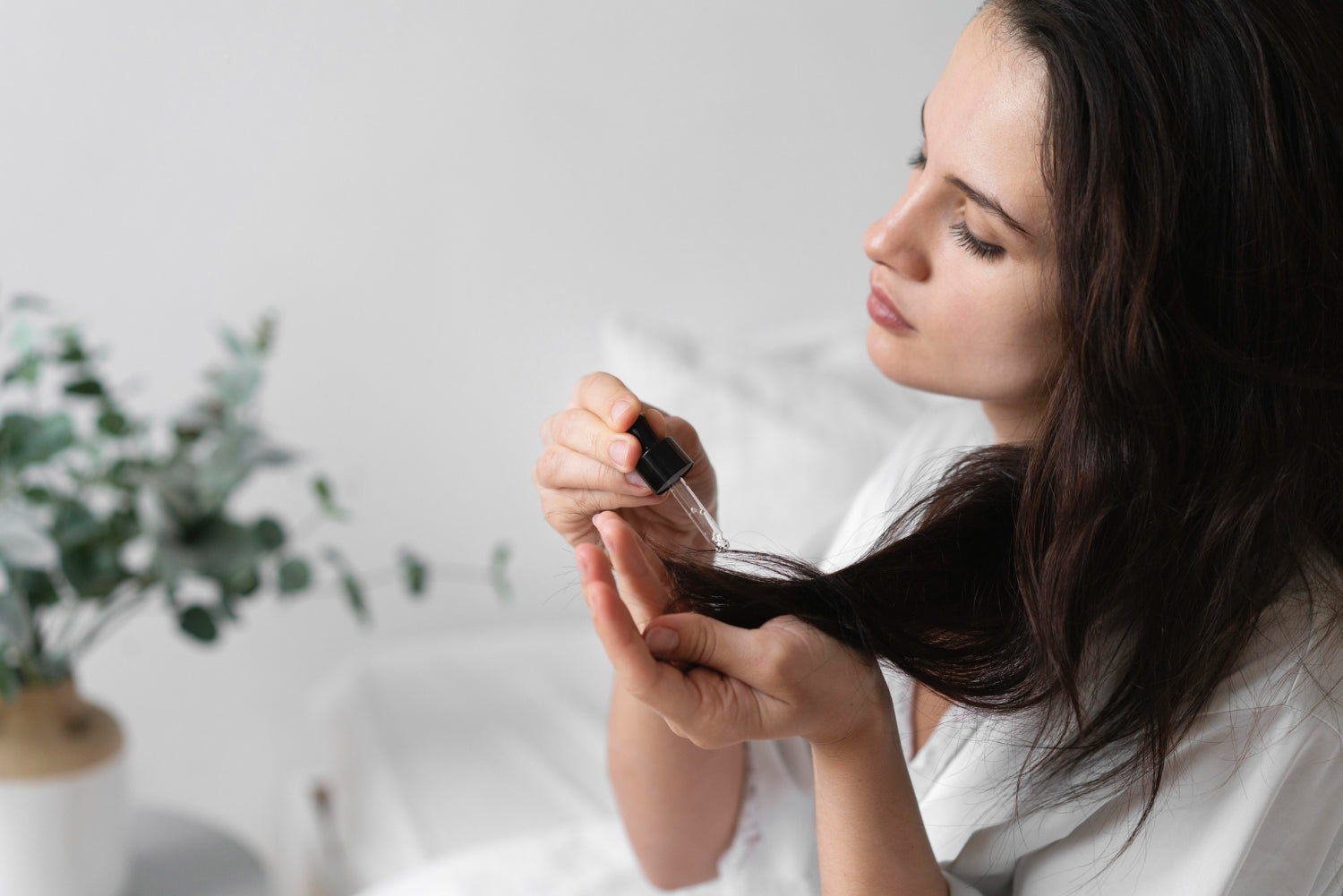Heat can be an ally to your hair. If you avoid prolonged heat, use the right tools, and make thermal protectant a staple in your routine, you’ll safeguard your strands while achieving the bouncy, healthy tresses you desire.
Is heat bad for hair, or is it just another old wives’ tale, like avoiding baths during thunderstorms or not swimming after eating? The truth isn’t so straightforward.
Sure, excessive heat can compromise your hair's integrity if you aren’t careful. However, when used wisely, it's your secret to achieving the smooth, salon-quality looks you love.
At YA-MAN USA , we use advanced Japanese technologies in our styling tools to give you the power of heat to amplify beauty while prioritizing your hair’s health.
In this guide, we break down the facts behind heat's impact on your tresses and teach you how to maintain healthy locks with regular heat styling.
How Bad Is Heat for Hair?: What The Science Says
Hair primarily consists of a protein called keratin , which forms the foundation of its strength and structure. Each strand contains two layers: the cuticle is your hair’s protective outer layer, while the cortex is the delicate inner layer.
Excessive heat can crack the hair’s protective cuticle and expose the cortex, compromising keratin in the deeper layers. This throws your hair’s moisture balance out of whack, potentially leading to severe structural damage.
But you might be surprised to learn that the cuticle can withstand pretty high temperatures. But that only applies to untreated hair.
And let's be honest — most of us have processed our hair in some way, whether through styling or coloring. But that doesn’t mean you have to rule out heat styling; the trick lies in your technique.
So, what does damaged hair look like?
Signs of Heat-Damaged Hair
Heat damage can take a toll on your hair in several ways. Some signs you’ll want to watch out for include:
|
|
The issue isn't so much the heat itself as how you're using it.
Causes of Heat Damage
Heat damage often stems from a few different practices. Understanding these can help you prevent unnecessary harm so you can use heat to bring out the absolute best in your hair.
Here’s a breakdown of the most common causes:
Excessive heat
Most heat tools boast a range of temperature settings for styling, but you don't always have to crank it up to full blast. Different hair types need different heat settings to maintain their health and integrity (more on this later).
Prolonged exposure
Keeping your heat tools in contact with your hair for too long or repeatedly going over the same sections increases the risk of fried hair. That’s why it’s crucial to limit each section to a single pass or two and diversify your routine with heatless styling options.
Overusing heat tools
Too-frequent heat styling can exacerbate wear and tear, leading to cumulative damage.

Skipping heat protectant
Heat-protectant products form a shield around your hair to buffer against the intense heat from styling tools. Skipping this step leaves your strands exposed to potentially damaging temperatures.
Using heat on drenched hair
Applying high heat to wet hair can cause the water in your hair to become steam, damaging the hair structure internally. Ideally, hair should be slightly damp before blow-drying or completely dry before ironing.
Using the wrong tools for your hair type
Not all heat tools are suitable for every hair type. For example, thick, curly hair may require stronger heating tools than fine, straight hair.
Poor styling tool maintenance
Using old heat tools with damaged plates or residue build-up can lead to uneven heat distribution, scorching, or overheating your delicate strands.
So, how do I protect my hair from heat?

7 Tips for Avoiding Heat Damage
At YA-MAN USA, we understand the fine balance between achieving that perfect style and maintaining healthy hair.
Here are 7 proven strategies for how to fix heat-damaged hair, prevent further harm, and keep your hair looking its absolute best:
1. Always use a heat protectant
Apply a high-quality serum, like YA-MAN’s Moist Hold Repair Oils to form a protective barrier that significantly reduces heat exposure, or the Deep Moist Repair Treatment , a hydrating treatment formulated with heat-activated ingredients like keratin. Another bonus? Our formula aids in cuticle repair while safeguarding your strands.
2. Stay consistent with your trims
Keep your ends fresh and free from split ends with regular trims. This not only keeps your hair looking healthy but also prevents the risk of further damage by stopping splits from traveling up the hair shaft.
3. Quality tools matter
Invest in high-quality styling tools that offer variable temperature settings and feature advanced technology, like Red Light Therapy or scalp massage , which distribute heat more evenly and reduce the likelihood of damaging hot spots. YA-MAN SPA STYLER® Blow Dry + Scalp Massage has entered the chat.
4. Lower the heat
Using less heat minimizes the risk of damage and helps preserve your hair’s natural vitality. For example, fine or chemically treated hair benefits from lower temperatures, like 250-300°F, while coarser or thicker hair requires more heat, up to 350-360°F.
That’s why our YA-MAN SPA STYLER® Straight + Wave has five heat settings (280 °F to 360 °F), so you can get the look you love while maintaining healthy, beautiful hair.
5. Perfect your technique
Avoid repeatedly running heating tools over the same strands, which weakens hair. Instead, use a steady, controlled motion and ensure each section only gets heated once or twice at most. When you finish styling, blast some cold air to help seal the hair cuticle, boosting shine and strength.
6. Give your locks a breather
Embrace your natural texture by experimenting with no-heat styles, or use accessories like headbands and clips for a fresh look on days when you need to rush out the door or want to go au naturel.
7. Incorporate deep conditioning into your routine
Deep conditioning treatments can help restore moisture and elasticity to your hair, especially post-heat. For those dealing with extreme heat damage, a deep conditioning mask, like our Deep Moist Repair Treatment, helps repair and strengthen your strands.

FAQs About Hair and Heat Damage
Will heat-damaged hair grow back?
Absolutely! The new growth from your scalp will be healthy and untouched by heat.
How can I heat my hair without damaging it?
Use a heat protectant and opt for lower temperatures on your styling tools. Make sure your hair is slightly damp or dry before applying heat, and invest in quality tools. Don’t forget to use regular deep conditioning treatments to reinforce your hair’s overall health and appearance.
How often should you use heat on your hair?
Everyone’s hair is different. Our advice? Let your tresses rest and recover between heat applications to preserve their strength and moisture .

YA-MAN : Smart Heat for Seriously Stunning Strands
So, is heat bad for hair? Not necessarily, but we always recommend using a lightweight heat protectant and reducing high heat usage for healthy, better-looking hair. Smart heat styling is all about balance and technique. With the right approach, you can create swoon-worthy styles without compromising your hair's health.
But remember, the key to beautiful, healthy hair isn’t just how you style it but also how you care for it. It’s time to achieve both style and substance — shop YA-MAN’s cutting-edge styling products today.



